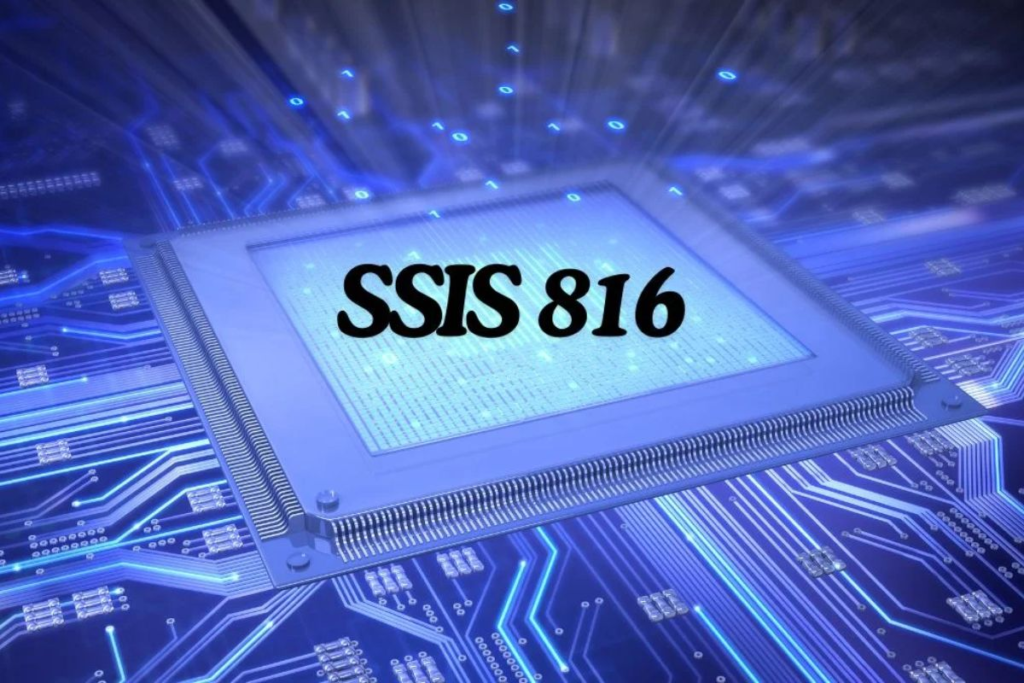
The Microsoft SQL Server suite contains SQL Server Integration Services (SSIS 816), a powerful data integration and transformation tool. It is used for data workflow management, ETL (Extract, Transform, Load) operations, as well as various data sources integration. Among all its versions and upgrades, SSIS 816 is a remarkable one due to its advanced features and functionalities. This article aims at providing a comprehensive overview of SSIS 816 by discussing its major features, advantages and challenges faced while using it. Additionally, some frequently asked questions about SSIS 816 will be answered in order to show you how to use it effectively in your data management tasks.
What is SSIS 816?
SSIS 816 refers to a unique release of SQL Server Integration Services which contains improvements in relation to previous versions. With this version, several performance upgrades have been applied, usability enhanced as well as integration capabilities upgraded. It is particularly famous due to its strong data transformation functionalities and better connection possibilities thus becoming an indispensable instrument in modern-day data scenarios.
Key Features of SSIS 816
Improved Performance
SSIS 816 is an upgrade compared to previous versions because of its considerable performance enhancements. There has been optimization performed on data movement and control flow components to boost the speed and efficiency at which ETL operations take place. As a result, these changes enable a faster processing of huge amounts of information while using less resources.
Enhanced Data Transformation Capabilities
A major characteristic that makes SSIS 816 exceptional is its sophisticated data transformation abilities. This means new transformation components are included alongside improvements of the old ones allowing for easier performance of intricate data manipulation. Among these improvements includes better support for data cleaning, aggregating as well as converting them into other formats.
Expanded Connectivity Options
SSIS 816 broadens its connectivity options, allowing for more data sources and destinations. It has improved support for cloud services, current database systems, and various file formats (from an HTML source). Users can now connect to multiple platforms when integrating and managing data.
Improved User Interface
The Graphical User Interface (GUI) of SSIS 816 has undergone a complete revamp to enhance usability. It makes it easier to create and handle SSIS packages by providing a more straightforward experience. Some of the changes made are in the area of graphics, drag-and-drop functionality as well as support during design time.
Better Error Handling and Logging
SSIS 816 brings on improved options for error handling as well as logging capabilities. This makes it simpler to identify and fix problems occurring while integrating different sets of data. The detailed messages regarding errors and the abilities of logging aid in diagnosing problems as well as ensuring seamless workflow of data.
Benefits of SSIS 816
Enhanced Efficiency
Fast data processing and lesser consumption of resources are some of the benefits of SSIS 816 performance optimizations. In turn, this enhances ETL activities thereby improving general system functionality.
Greater Flexibility
SSIS 816 is a data transformation program which is more flexible in handling different kinds of data environments due to its many connection options and enhanced transformation facilities. The program allows users to connect to various sources of data for easy integration and carry out various complicated transformations.
Improved Usability
This altered form of a user interface ensures that the users can generate and handle SSIS packages easily. This renovated usability lowers the learning curve while maximizing productivity.
Robust Error Handling
The data integration processes are better visible in SSIS 816 by means of improved error handling and logging features. This means that problems can be found and solved quickly, thus ensuring that data flows are trustworthy.
Common Issues and Troubleshooting in SSIS 816
Performance Bottlenecks
Most importantly, SSIS 816 strives to ensure that users don’t experience any performance bottlenecks even though it boasts of better performance than before. You can easily solve this problem by improving data transfer nodes in the pipe, configuring entries appropriately and making sure that enough computer resources are available for doing your work.
Compatibility Issues
In older SQL Server or third-party components, SSIS 816 could suffer from compatibility problems. Therefore, this necessitates conducting compatibility checks on SSIS 816 prior to proceeding with any upgrade so that integration issues can be avoided.
Complex Error Handling
Despite its improvements in the area of error handling, SSIS 816 still faces difficulties with regard to complex data integration scenarios. It is therefore important for users to learn about these new features and, when necessary, think of custom logic for addressing errors.
Migration Challenges
Transitioning from preceding editions of SSIS to SSIS 816 can occasionally be demanding. When one upgrades, it is essential to meticulously arrange and examine the migration process so as to confirm that every element and package operates appropriately post upgrade.
Best Practices for Using SSIS 816
Optimize Data Flows
The optimization of data flows is the key to achieving maximum performance in SSIS 816. Proper buffer sizes should be used, transformations minimized, and efficient data source and destination configurations ensured.
Leverage New Features
Make use of the newly introduced functionality and improvements found in SSIS 816. These entail employing the newest transformation components, investigating extended connection choices, and applying enhanced capabilities in log recording and mistake management.
Test Thoroughly
Before deploying 816 packages of SSIS into production, subject them to extensive testing in a lab or pre-deployment environment. In this way, problems associated with performance, compatibility, or functionality can be found and solved.
Keep Updated
Be abreast of any updates or patches for SSIS 816. Microsoft periodically releases updates that can fix bugs, improve performance, and add new features. If you want to enjoy more from SSIS, make certain that your environment is always updated.
Conclusion
SQL Server Integration Services (SSIS) version 816 is an important upgrade that provides better efficiency, data transformation capabilities and more connectivity possibilities. Its new user interface design and advanced error management functions make it an ideal choice for managing and integrating data. To be able to make the best use of SSIS 816, it is critical to grasp its main characteristics, advantages and principles of practice that are effective so as to streamline your data workflows and get improved results.
FAQs
What is SSIS 816?
Improvements in performance, advanced data transformation functionalities, and the ability to connect to more sources are some of the characteristics of SQL Server Integration Services known as SSIS 816.
What are the main benefits of using SSIS 816?
SSIS 816 helps you to manage your data more effectively, decreasing the time taken to complete projects and tasks while enhancing the quality of work done and increasing the level of experience that comes in doing the same.
Are there any common issues with SSIS 816?
When it comes to SSIS 816, common problems include performance bottlenecks, compatibility issues, complex error handling, and migration challenges, among others.
How can I optimize performance in SSIS 816?
In order to achieve the best results, it is necessary to concentrate on improving the data streams, using right buffer sizes, reducing the rate of conversion processes, and making sure that configurations of data sources and sinks are done efficiently.
What are the best practices for using SSIS 816?
New abilities utilization, thorough packages testing, timely updates with fixes and improvement of information streams are part of the best practices.







